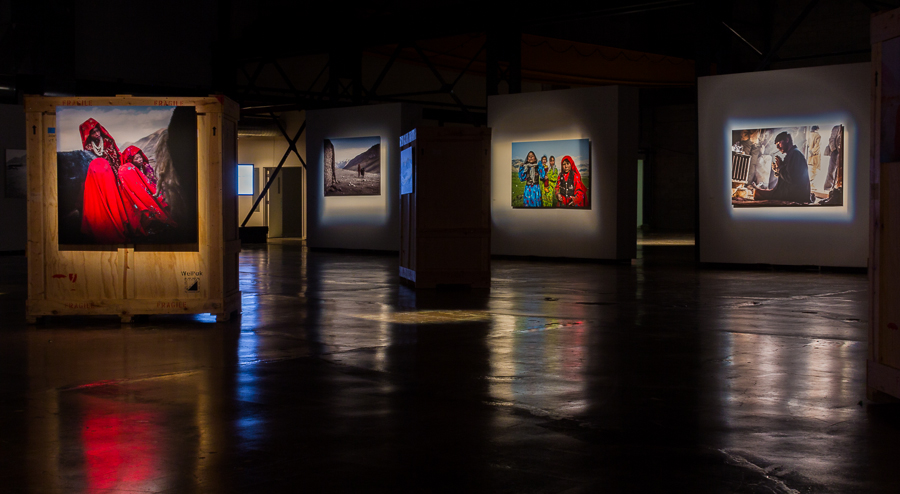Varial Cédric Houin’s current exhibition at Galerie Arsenal, “Wakhan, Another Afghanistan,” is an interdisciplinary representation of one of the regions of the world least visible to the West. The Wakhan Corridor is a mountainous link between the Himalayas – the Hindu Kush mountain range of Afghanistan – and the closed borders of China, an area unaffected by conflict. Houin, a Montreal-based artist, trekked through the corridor in 2011 with his partner Fabrice Nadjari, documenting the area with his camera. His exhibit, with contributions from Nadjari, uses photography and video to translate the “peaceful coexistence” of the two groups who live in the Wakhan Corridor, the Wakhi and the Kyrgyz.
The nature of the exhibit is very intimate, a treatment of the Corridor that strives to reproduce candid, quotidian snapshots of Wakhan. The photos themselves are done either in inkjet print or UV ink printed on aluminum, each one lit by a spotlight from the ceiling. Houin’s pictures focus heavily on individuals, or groups of two and three, depicting how they work, play, dress, and smoke. The up-close and personal quality of the pieces in the exhibit acts as a kind of study of facial expression. Houin himself becomes a part of the photo in such pieces as In Between Two Laughs and Who Are You, where the expressions of curiosity or uncertainty of the subjects seem to be in direct response to the man behind the camera. This focus on the individual is evidence of Houin’s attempt at an honest portrayal of the people of the Wakhan Corridor.
The photos that do not depict people are photos of the land, stunning images of mountains and stars. The Wakhan Corridor is so devoid of urbanization, technology, and population that one is tempted to label it as barren, but Houin’s representation is one of simplicity, and, to use his words, “purity,” not despair.
The exhibit claims to be a political act through its provision of an alternative to the stereotypical view of Afghanistan. Its political nature also manifests itself through the representations of Western infiltration into the “purity” of Wakhan. One of the most striking individual portraits, Just Do It, is a full-length image of a young boy wearing a dirtied, ripped Lacoste t-shirt. Houin’s film Kasch Goz, 1979 features a boy pretending to be a soldier, saluting the camera, and shooting at it with a pretend gun. The exhibit itself is also set up by the shipping crates on which the photos are mounted. However, in its critique of Western infiltration, the exhibit loses some of its objectivity, partially because Houin himself represents a facet of that Western intrusion. Houin’s photos and studies of Wakhan emphasize the supposed “beauty and simplicity” of these traditional cultures over the poverty and hardships of the region, which he acknowledges in his artist’s statement, but does not represent. While Arsenal claims the exhibit is “devoid of any criticism,” it is a critique, as well as a political act, in and of itself. In order to represent Wakhan in a political way, Houin has constructed his personal image of the Corridor. In order to do this, it seems that Houin has avoided any attempts to include the viewpoints of the Wakhi and Kyrgyz, doing little to even discuss the differences between the two cultures.
Houin strives to reveal a part of the world generally unheard of in North America, attempting to dispel the many generalizations and dismissals of Afghanistan as a zone of terror. His stunning photos of the Wakhan mountains and intimate explorations of its people certainly serve their purpose in introducing Montreal to Wakhan. The pieces themselves appear remarkably natural. Houin has achieved his goal of broadening horizons; however, he has not done so without incorporating personal bias. “Wakhan, Another Afghanistan” provides an extremely Western view of a non-Western society, a study of faces as opposed to voices.
“Wakhan: Another Afghanistan” will be running until December 21 at Arsenal Montreal (2020 William).

